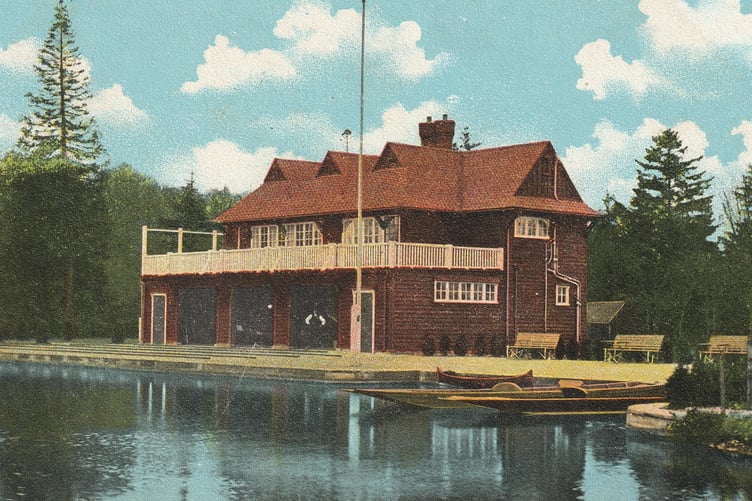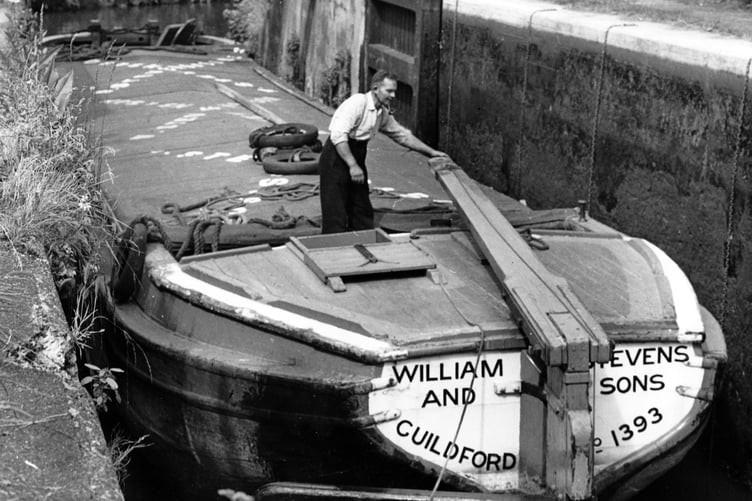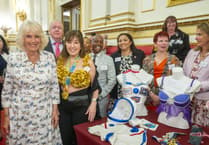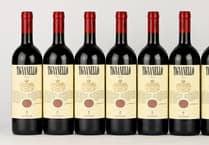MESSING about in boats on the river is something that reader Alan Fairlie thoroughly enjoyed during his youth, as we look back in this week's Peeps into the Past.
Alan grew up in a house that was named Dornoch – it is now 124 Byfleet Road, New Haw.
In the early 1940s, his father built a canvas-covered canoe. This was taken to Hayling Island in Hampshire on the roof of his father’s Vauxhall 10 car each year as part of the family’s summer holidays. However, back home they needed somewhere to store the canoe.
Alan said that Charles Rance, a friend of his father, rented one of the boathouses at Byfleet on the Wey Navigation, from where he hired out punts, skiffs, rowing dinghies and a motor boat. Charles rented out space for other people to store their boats, including the Fairlie family’s canoe.
Alan said: “Some of my friends – in particular I remember John Carver and Midge Moore – and I used to hang around the boathouse, helping Charles with loading up the boats, and taking out our family canoe when times were slack. At the end of each day, we took all the hire boats across the canal to another boathouse where they stayed in some security until the next day.”
Alan said that Henry Cawsey was at this boathouse and he ran an electrical shop in West Byfleet, where his two sons, David and Kelvin, worked.
Henry was a well-known member of Woking Urban District Council, had been an alderman in bygone days, and had part of Woking named after him.
But Alan said: “Regrettably, the ‘Cawsey’ part has now been omitted and we just have ‘Henry Plaza’.”
Alan added: “In the early days of our being at the boathouse, the more observant of us would suddenly notice the water level had risen a couple of inches or so and was now level with the landing stage. This indicated that a fully laden barge – pulled, usually, by two horses – had entered ‘our’ stretch of water from upstream.

“As the barge approached the upstream side of Parvis Bridge, the horses had to be freed from towing it, and as quickly as possible taken across the road to be hitched up again on the boathouse side.
“The success of this operation depended on the barge, once freed from its tow, having enough momentum to go under the road bridge and be steered towards the towpath to be reconnected to the horses.”
The barges Alan saw were most likely the last of those in use by the Stevens family, who then owned the River Wey Navigation. These barges were much larger than the narrowboats seen on other British waterways.
Wey barges were 73ft 6in long and 13ft 10.5in wide, so they just managed to fit into the locks on the waterway.
They could carry up to 80 tonnes of cargo. The ribs of the hull were made of oak. The hull was planked with pitch pine.
The barges were constructed at Dapdune Wharf in Guildford by members of the Edwards family of boat builders.
In 1964, Harry Stevens gifted the Wey Navigation to the National Trust. The last commercial loads were grain from the Port of London to Coxes Mill at Addlestone. This ceased in 1969.
Two of the Wey barges – Reliance and Perseverance IV – can be seen at the National Trust’s Dapdune Wharf visitor centre, off Woodbridge Road, Guildford.
* IF you have memories or old pictures relating to the Woking area and its people which you would like to contribute to this page, call David Rose on 01483 838960, or write to the News & Mail.
David gives illustrated local history talks to groups and societies. For enquiries and bookings, email [email protected].





Comments
This article has no comments yet. Be the first to leave a comment.